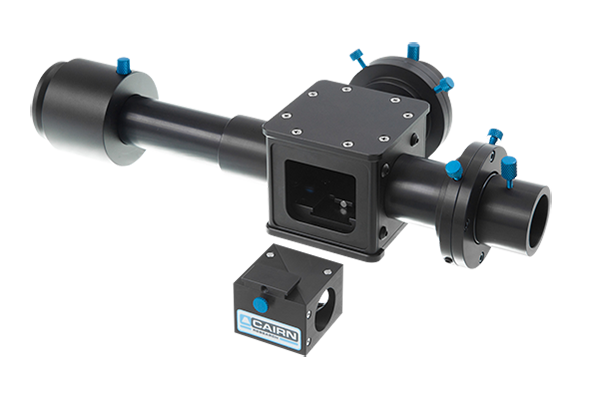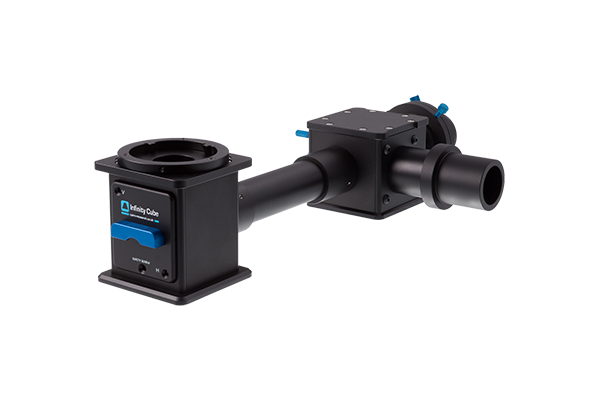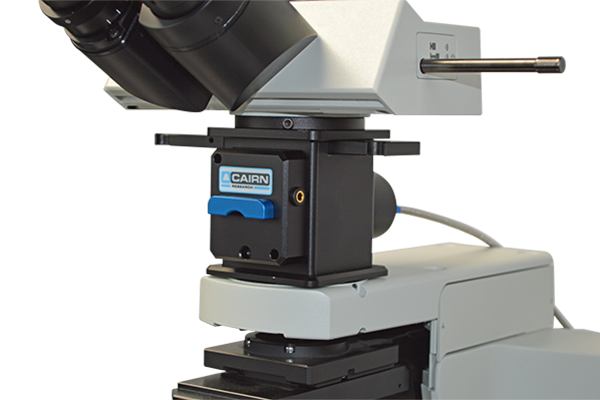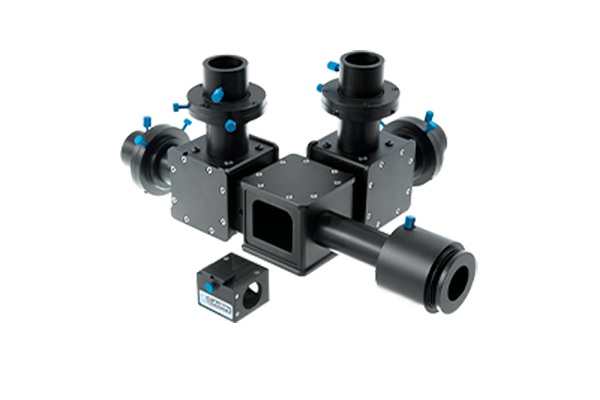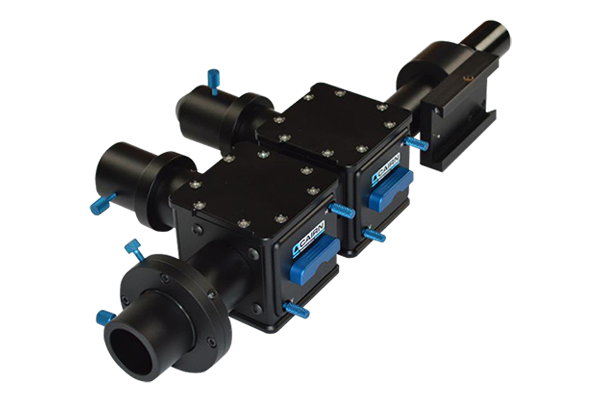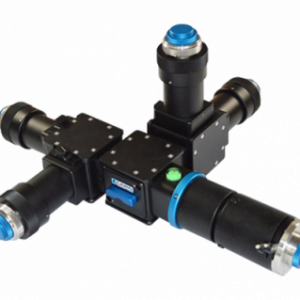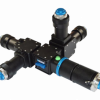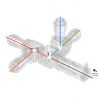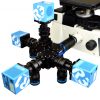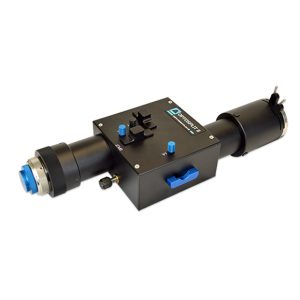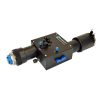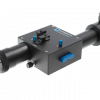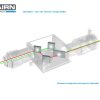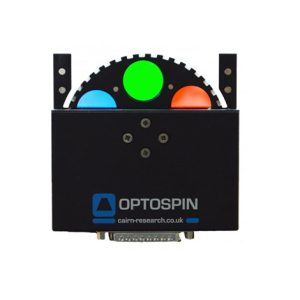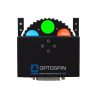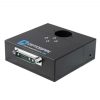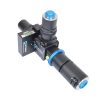
Microscope Couplings
Highly modular coupling system for linking up to four light sources
- Connects to the epifluorescence or transmitted light port of a microscope
- Supports epiport, transmitted port, direct, and infinity port illuminators
- Well-suited to a broad variety of applications including multi-wavelength LED illumination and Light Engines
As quantitative microscopy becomes increasingly complex, researchers often need to employ multiple light sources for epifluorescence experiments. Microscopes, however, are designed with only one or two epi-fluorescence input ports. Additionally, for many laboratories, a single microscope stand must be equipped to serve a broad variety of functions. The Multiport Illumination adapters provide a flexible solution to both problems. These adapters consist of a highly modular illumination coupling system for combining up to four light sources to the input light port of a microscope.
The Multiport Illuminators are based around an interlocking series of cubes that accept the same filter cubes used in the OptoSplit and TwinCam products. These interlocking cubes can be used in series to create a custom configuration. With the appropriate dichroic mirrors, the user can select the desired wavelengths.
There are 4 types of couplers available, depending on the type of microscope, each capable of supporting up to 4 input light sources:
- Epi port illuminators – Mount to the standard epi-illuminator port of any upright or inverted microscope, replacing the existing lamp house.
- Transmitted port illuminators – Mount to the standard transmitted light port of any upright or inverted microscope, replacing the existing lamp house.
- Direct illuminators – Replace the standard epifluorescence illuminator on an inverted microscope, enabling more power at the sample plane. In addition, the direct couplers are compatible with the field stop adapters that allows one of the LEDs to be partially masked while leaving the other ports to illuminate the full field.
- Infinity port illuminators – These fit between the trinocular head and body of several upright microscope models, allowing light to be ported directly into infinity space and be combined with the standard epi-illumination pathway. The infinity port adapters are also compatible with field stop adapters.
The multiport illumination adapters are compatible with the OptoLED, OptoLED lite and OptoFlash LED systems, the OptoScan Monochromator as well as any other light guide-coupled light source. There are also the options to couple a single-mode or a multi-mode fiber from the LDI for a simple, single-point FRAP/Optogenetics/Photoactivation system.
| Number of LEDs or other Light Sources Supported | Up to four per microscope port |
| Wavelength Range | 355 nm – 940 nm |
| Compatible Microscope Ports | Epifluorescence port, transmitted light port, direct coupling via epi-illuminator replacement and direct insertion into the infinity space of an upright microscope |
| Compatible Light Sources | OptoLED OptoLED Lite OptoFlash OptoScan Any liquid light guide coupled light source Any single-mode fiber-coupled laser |
| Up to 4 Light Sources per Port | Flexible experimental configurations |
| Combine Multiple Types of Light Sources | Simultaneous activation/conversion/bleaching with imaging |
| Optional Independent Field Diaphragm or Pinhole | Illumination of a small ROI with one wavelength while simultaneously imaging full-field with another |
| Independent Centering and Focus on Each Port | Ensures full-field illumination |
- Multi-wavelength LED illumination
- Combination of LEDs with arc lamps
- Flash photolysis and fluorescence
- FRAP
- Photoactivation/photoconversion
- Rhodopsin switching and other optogenetics-based applications
- Full-field and diffraction-limited laser coupling
Downloadable Documents
Please find links below to relevant downloads for our products.
Related products
-
Cairn
MultiCam LS Image Splitter
Highly flexible image splitter that enables multi-camera, simultaneous multi-channel imaging from a single microscope port
- Supports up to 4 channels of varying polarity, emission wavelength, and depth of focus
- Essential equipment for researchers wanting to push the limits of simultaneous multi-channel imaging
(0 reviews) -
Cairn
OptoSplit II LS Image Splitter
Easy-to-align image splitter that enables a single camera to record images simultaneously at two different emission wavelengths
- User-friendly design requires minimal maintenance and makes alignment simple
- Excellent for use in FRET, TIRF, and spinning disk confocal applications
- Compatible with all major brands of camera, including large sCMOS chips
(0 reviews) -
Cairn
OptoSpin25 High Speed Filter Wheel
Compact filter wheel with high-speed stepping or continuous spin mode
- Excellent for high-speed applications with minimal vibration
- Continuous spin mode for a wide range of speeds
- Small form-factor permits multiple units to be used in tandem for faster switching times
(0 reviews)


